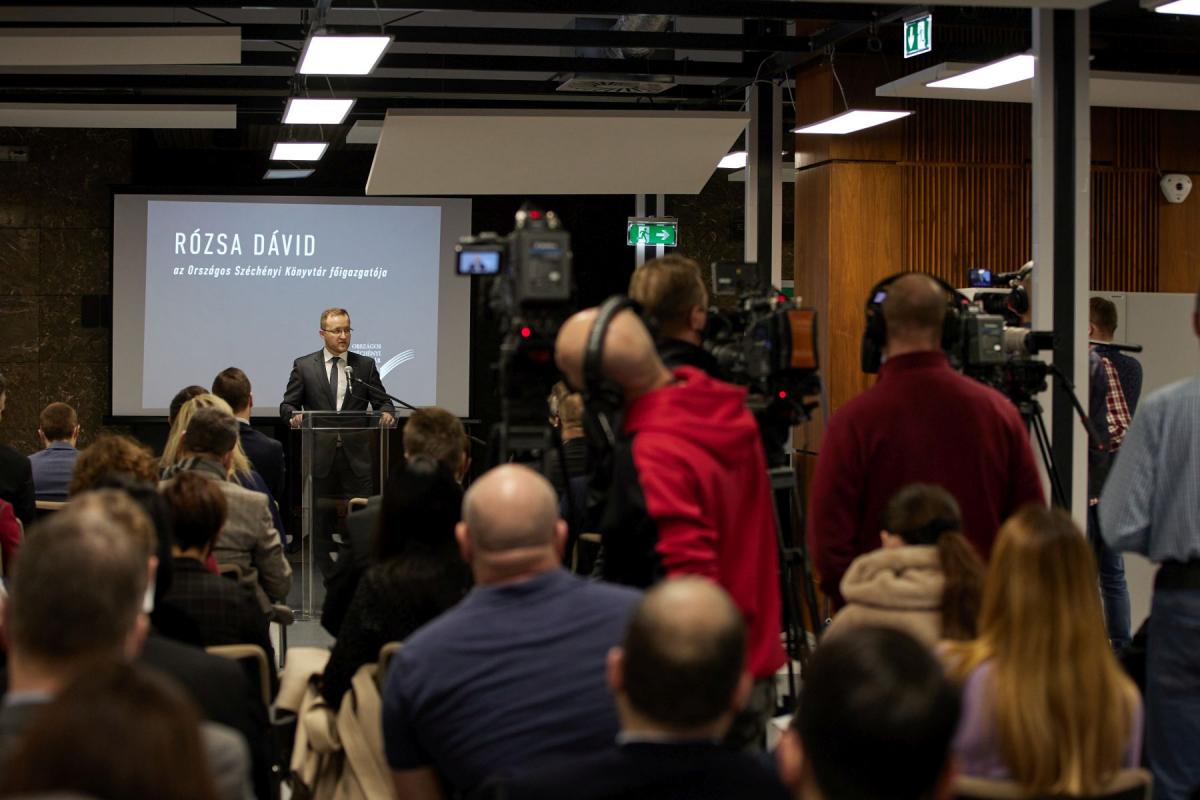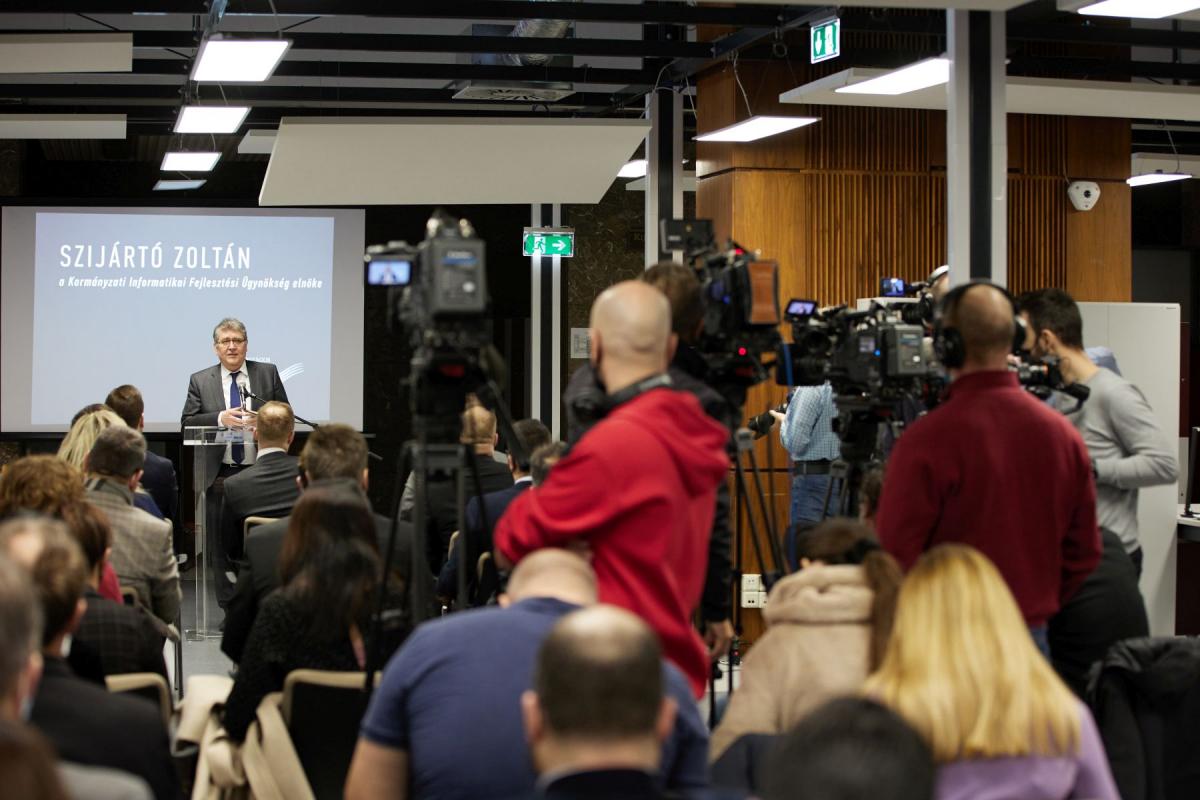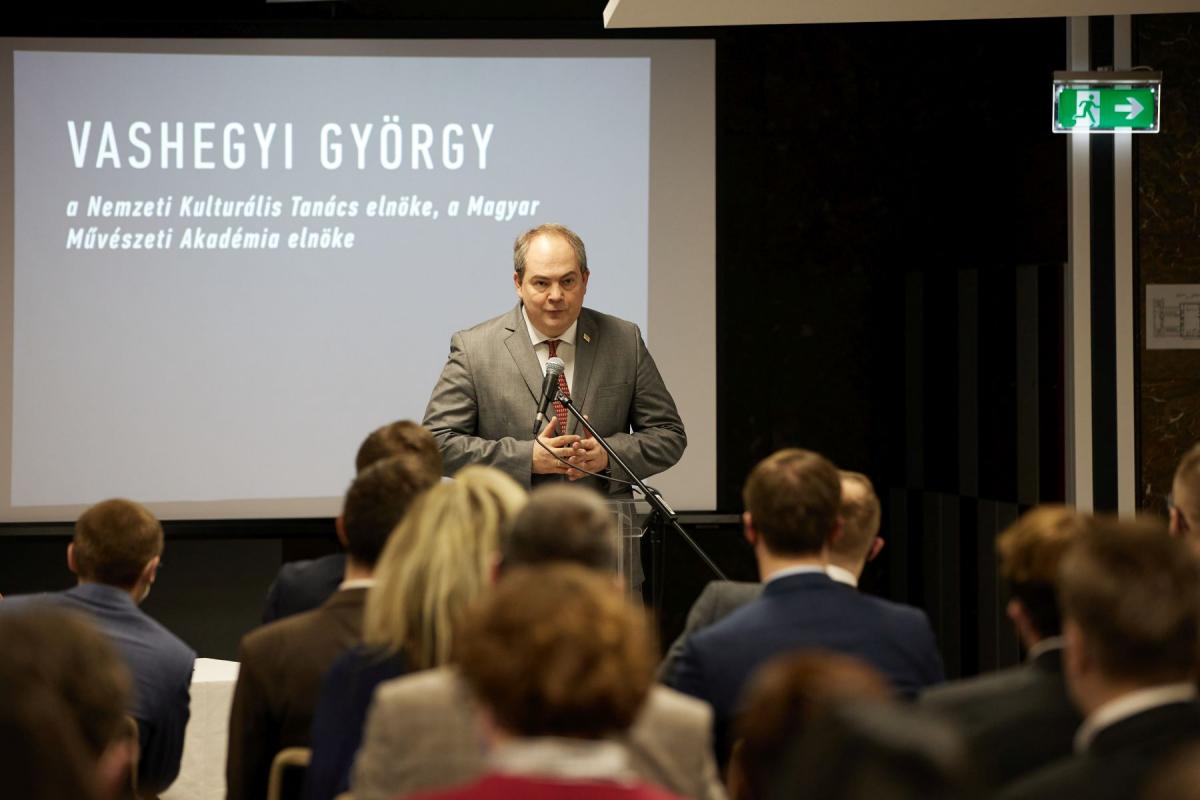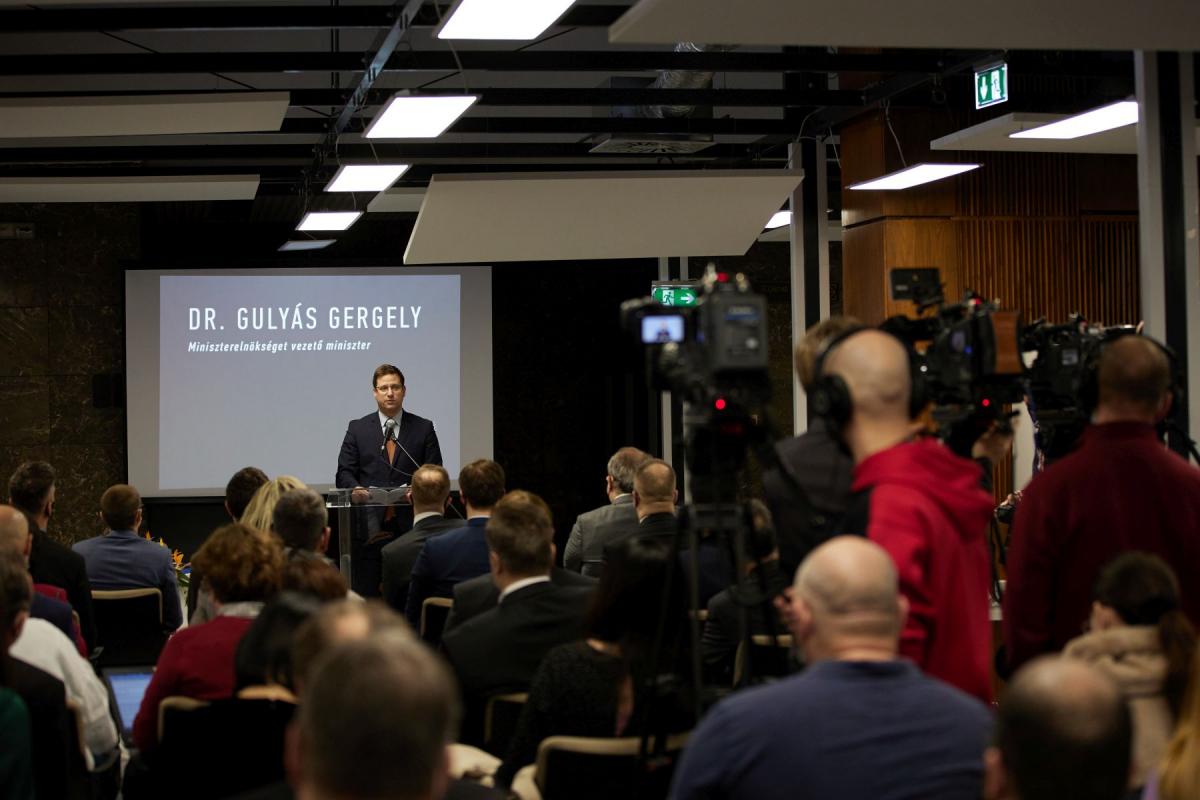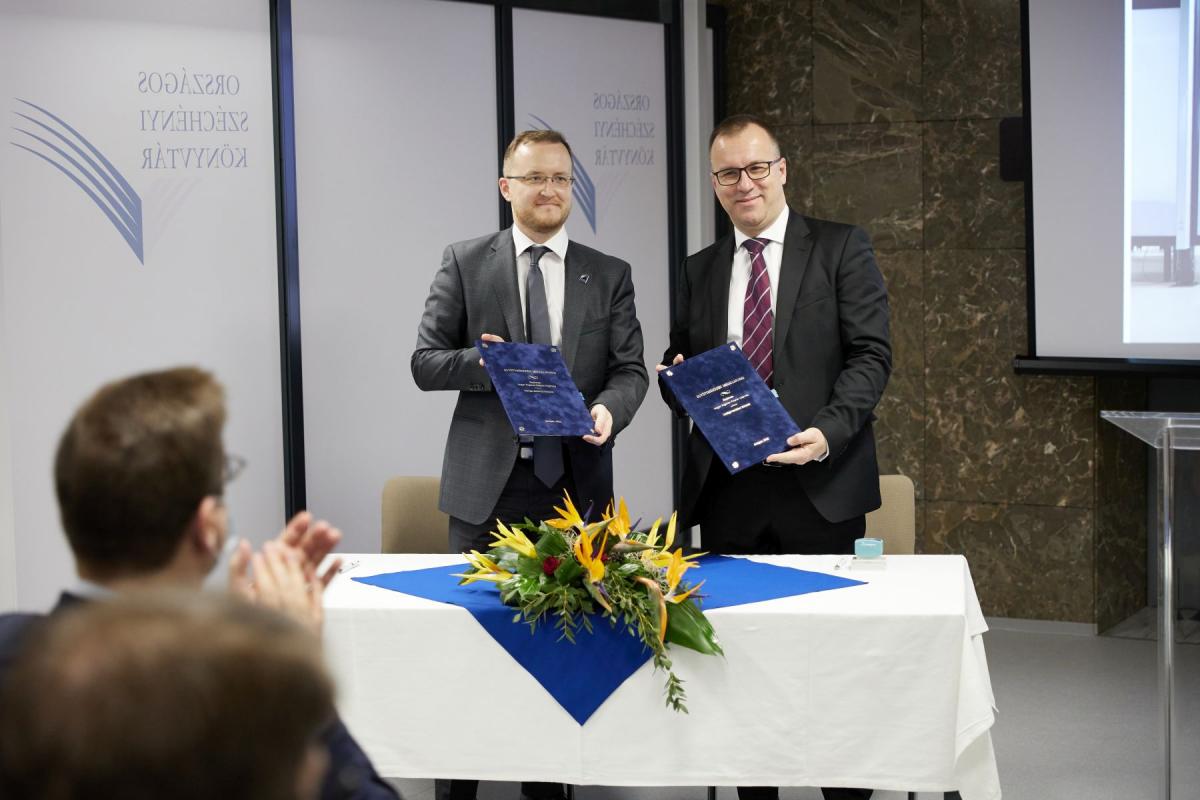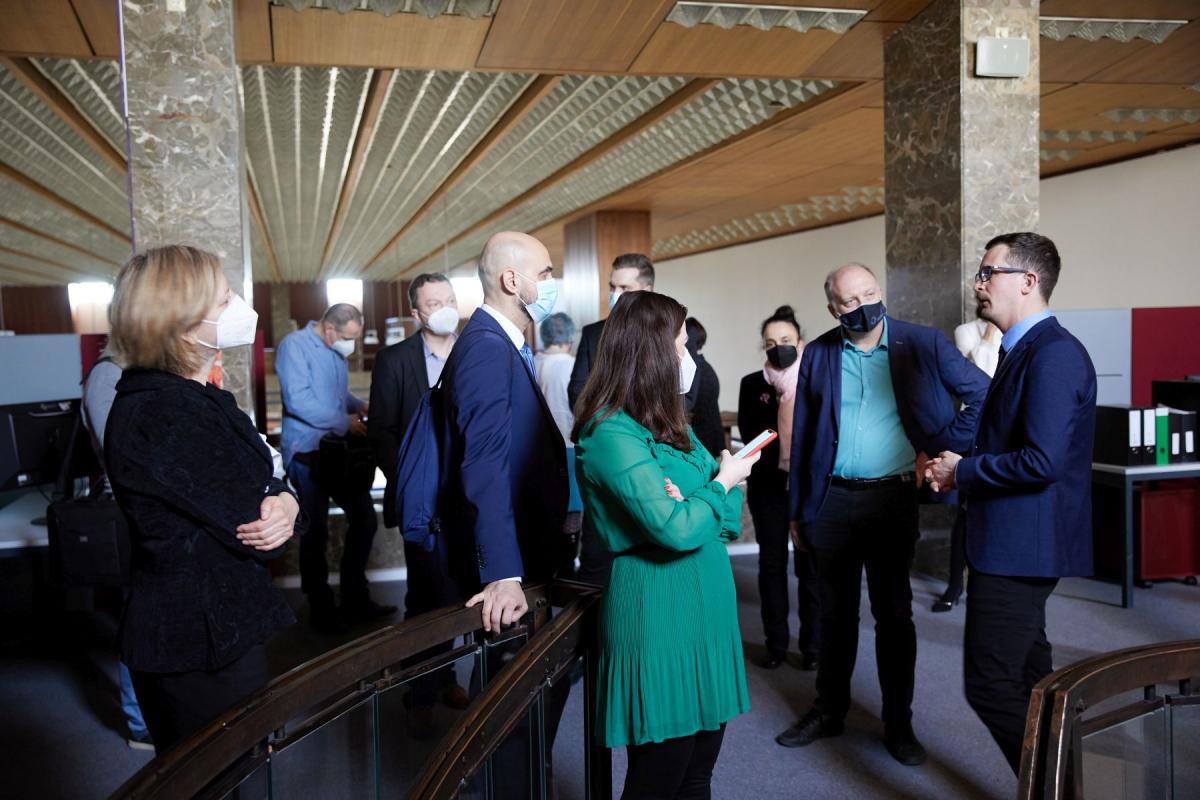
Central Europe’s largest and most modern Digitisation Centre in a public collection inaugurated
The National Széchényi Library, which celebrates the 220th anniversary of its foundation in November this year, inaugurated the largest and most modern Digitisation Centre in a public collection in Central Europe on the eighth floor of the library on 11 February 2022. In his welcome speech, Dávid Rózsa, Director General of the institution, emphasised that the Government Decree of 2016 to establish one of the most significant digitisation centres in Europe as part of the National Library System (OKR) has made it possible to build the new centre.
In his welcome speech, Dávid Rózsa stressed that the NSZL is continuously expanding its online portfolio, and the Digitisation Centre will be of great help to the national library. In 2021, the library’s digital services have already received 36 million requests. By creating the hardware and software environment to meet the needs, mass digitisation will be possible, as well as the manual processing of documents that need careful protection. In his welcome speech, the head of the institution also highlighted that thanks to the support provided by the government, wages at the OSZK have increased by an average of 56% in one year; in 2021, a new research room was created in the main building of the NSZL (Building F of the Buda Castle), while the Baroque room of the Historic Library of Zirc was renovated, among other things. At the same time, the decades-old problem of acquiring Hungarika material from abroad has been solved, and three times as much money is being spent on stock acquisition as before. In addition, the archival storage of the national library in Piliscsaba will be completed by 2023.
Zoltán Szijártó, President of the Governmental Agency for IT Development (KIFÜ), highlighted in his welcome speech that the capacity created within the framework of the government development will enable the storage and search of 23 million books, and this system can be extended to other libraries, museums or even larger institutions. A total of 22,000 terabytes of cloud storage space has been created on several sites in a disaster-resistant design to host and run the IT systems created in the project.
 Szilárd Demeter, Ministerial Commissioner for the Integrated Development of the National Library, the Hungarian Library Sector and Public Literary Collections, Director General of the Petőfi Literary Museum recalled that in 2019 the NSZL was reviewed from both a professional and an IT perspective, and the final reports made it clear that the institution needs not only a good librarian, but also a good manager. The Ministerial Commissioner praised Director General Dávid Rózsa for his work over the past two years, noting that he had removed 560 cubic metres of rubbish and waste from the NSZL building. As for the ongoing developments, he pointed out that the national library will integrate its 80 databases into a single one in spring 2022.
Szilárd Demeter, Ministerial Commissioner for the Integrated Development of the National Library, the Hungarian Library Sector and Public Literary Collections, Director General of the Petőfi Literary Museum recalled that in 2019 the NSZL was reviewed from both a professional and an IT perspective, and the final reports made it clear that the institution needs not only a good librarian, but also a good manager. The Ministerial Commissioner praised Director General Dávid Rózsa for his work over the past two years, noting that he had removed 560 cubic metres of rubbish and waste from the NSZL building. As for the ongoing developments, he pointed out that the national library will integrate its 80 databases into a single one in spring 2022.
Further on, Szilárd Demeter also stressed that the integration of digital cultural data will be successful if the various institutions do not publish the results of their own digitisation isolated, but the entire national cultural data will be available in one unit, free of charge, and in order to achieve this, it may even be worth amending the legislation.
On the occasion of the inauguration of the Digitisation Centre, a cooperation agreement was signed between the NSZL and the Haydneum – Hungarian Centre for Early Music. György Vashegyi, President of the National Cultural Council and the Hungarian Academy of Arts, said about the cooperation between the Haydneum and the NSZL: its aim is to use the new Digitisation Centre to process, with the participation of Haydneum staff, musical and musicological remains of great cultural value from 1600 to 1850 in Hungary.
In the order of the speeches, last but not least, Dr. Gergely Gulyás, Minister of the Prime Minister’s Office, stated that the handover of a very important and impressive undertaking took place on this day; the NSZL now has the largest and most modern equipment among the public collections of Central Europe, which allows the digitisation of 10 million pages per year and is capable of digitising all types of documents in the library. Gergely Gulyás stressed that the amount spent on this will enable the NSZL to publish and display in a modern way everything it holds as a national treasure. According to the Minister, the task is much more than just interconnecting new digitisation tools, cutting-edge software, online content and secure storage: it is also about bringing the Hungarian section of the Gutenberg Galaxy into the digital age. Digitisation is the order of the modern age, and with the handover we have managed to pay off a debt of two decades; the Corvinas of King Matthias, the voice of Kossuth or old sheet music can be accessed from Cleveland, Budapest or Kolozsvár (today Cluj-Napoca).
The National Library System (OKR) project was based on the Government Decree 1605/2016 (XI. 8.) on the provision of funds for the IT development of the National Széchényi Library. The NSZL’s partner institution in this work is the Governmental Agency for IT Development (KIFÜ), in cooperation with which the NSZL has spent around eighteen percent of the amount allocated in the Government Decree on development at its own discretion.



